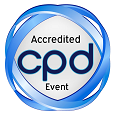5th International summit on Medical Biology & Bioengineering
Chicago, USA

Hansen A Mansy
University of Central Florida, USA
Title: Pulmonary vibro-acoustics: a tool for aiding medical diagnosis
Biography
Biography: Hansen A Mansy
Abstract
Body sounds and vibrations have been used in medicine for diagnoses and monitoring of a wide range of conditions. There is potentially unique and diagnostically important information in audible and sub-audible frequency vibrations since characteristic times for many physiological processes and resonances of many anatomical structures are in that range. Traditional use of the stethoscope to access vibro-acoutic changes is skill-dependent and can only briefly provide qualitative information at a single or a few measurement points simultaneously. To fully reap the potential of this rich signal source requires: Better understanding of: Acoustic source and its relation to pathology and acoustic propagation from the source to the sensor, which can be more complex than ultrasonic frequencies due to the potential for multiple reflections, multiple wave types, and multi-path behavior; Development of realistic mechanical, computational and animal models; more accurate measurements of vibro-acoustic properties of materials; Use of better sensors and sensor arrays; and Implementation of optimal signal processing methods for noise removal, feature extraction, and classification. This talk will focus on examples of pathologies that may be diagnosed and monitored via their vibro-acoustic signatures, in an attempt to demonstrate how combining information from several disciplines can provide a potentially powerful tool to aid in medical diagnosis. The presented vibro-acoustic approach offers several potential advantages including: safety, prompt results, low cost, portability, noninvasiveness, and lack of ionizing or other radiation risks.

